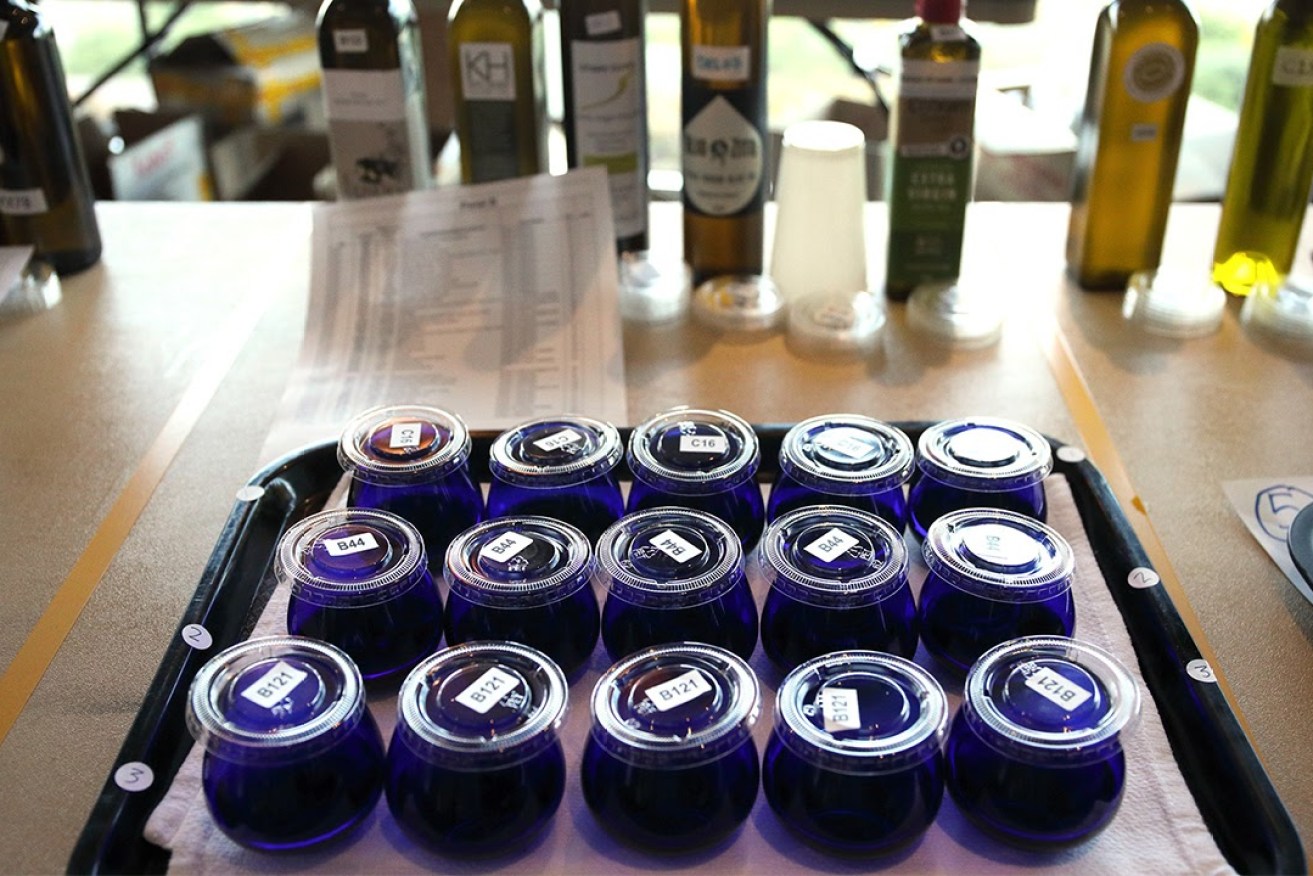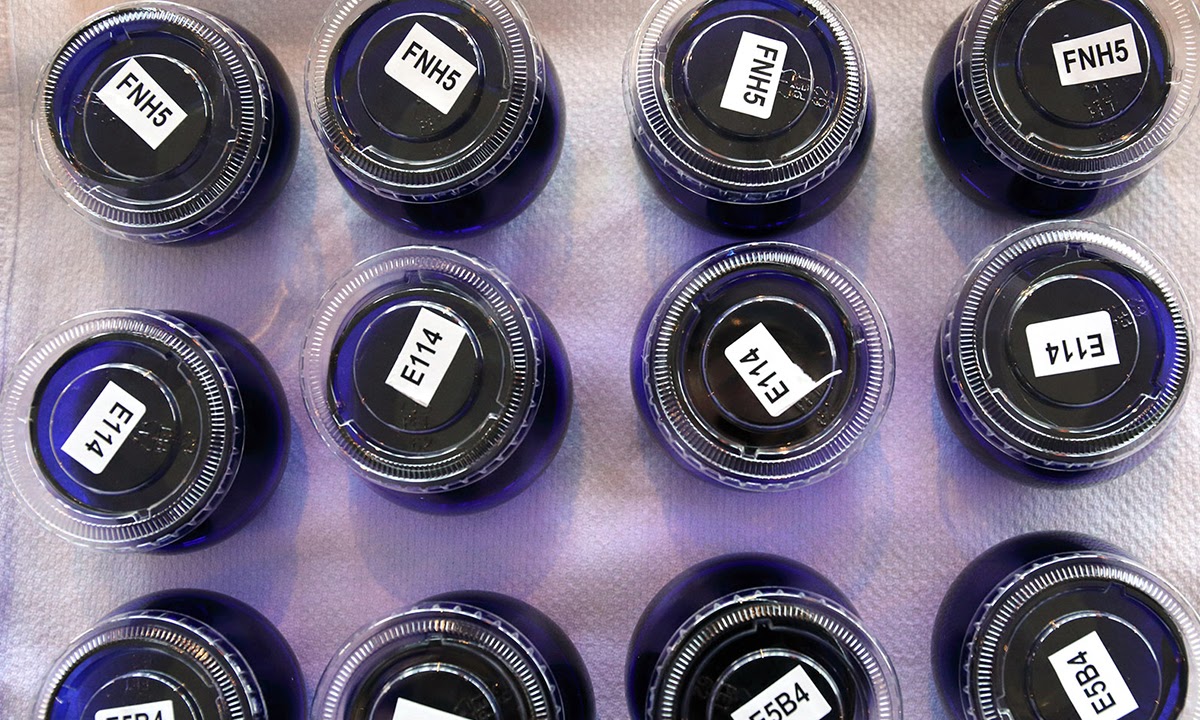Taste test: the best olive oil is anything but boring
As one of the judges in the Australian International Olive Awards puts it: “It’s like judging wine, but it’s much harder to get it to talk to you.”

Lined up and ready for tasting. Photo: Tony Lewis
There are six tables with 27 lab-coated judges in a room at the West Lakes Resort Hotel. In front of them are carafes of water and a few crackers with slices of apple to refresh palates, much as you’d find at a wine judging, but there the resemblance ends.
Each table assesses three extra virgin oils at a time, a few CCs in a small blue glass cup, gently warmed in the hands. If there’s going to be any meaningful “talk”, it’s most like to happen when the oil is at 28C.
The oil is sniffed, often repeatedly, followed by gentle oily slurpings. As with wine judging, air is sucked in with the oil to maximise the effect.
They’re looking for aroma and flavour – Are any problems revealed? – then for bitterness on the palate, and finally for pungency, a peppery sensation on the back of the throat.

Photo: Tony Lewis
As with wine, there’s a whole new lexicon of taste descriptors, a language unfamiliar to the uninitiated. Where this taster considered entry A230 as simply bland and bitter, the judges found tomato leaf on the nose and grapes on the palate, with slight bitterness – a low silver score.
A244, to this uneducated palate, had little aroma, not much flavour, bland and boring – it didn’t talk at all. The judges agreed. Argentinian Pablo Canamasas, an international authority, commented: “I was bored,” adding that he found boiled vegetables and overcooked flavours. Another judge described it as “overripe tomatoes that have gone off.” Presumably this was one of the very few oils on show not to win any medal.
The gold medal winners were different. C267: “Lovely fresh nose, herbaceous with hints of basil and oregano on the palate, jumps out of the glass (now that’s talking), complex flavours, pungency on the back of the throat, well balanced.” Or F258: “Malt biscuit, cinnamon and vanilla on the nose, spectacular chilli pepper finish, creamy and spicy on the palate.”
These days there’s a new slant to the Castrol GTX series of commercials of 30 years ago that became one of Australia’s best advertising slogans ever: Oils definitely ain’t oils, at least not when they’re olive oil.
What to look for
Most extra virgin olive oils retain freshness for at least 12 months if stored properly in sealed bottles in a cool, dark place. Unlike wine, olive oil does not improve with age – so the closer to its production you use it, the better. Australian producers are increasingly putting harvest date on their bottles.
Choice magazine describes “virgin” oil as being cold extracted from olives by a mechanical process without excessive heat, additives or solvents.
“Extra virgin” oil, in addition to the above, has low acidity (0.8 per cent or less) and should comply with other technical specifications as well as being free from taste defects.
“Light”, “lite” or “pure” olive oils have been refined through a combination of physical (heat) and chemical processes, resulting in an oil with no distinctive aroma, colour or taste. A small percentage of virgin oil is then mixed with this oil to give it flavour. Refining removes antioxidants, so these oils aren’t as healthy as extra virgin. They don’t have less fat or fewer kilojoules than regular oils.




